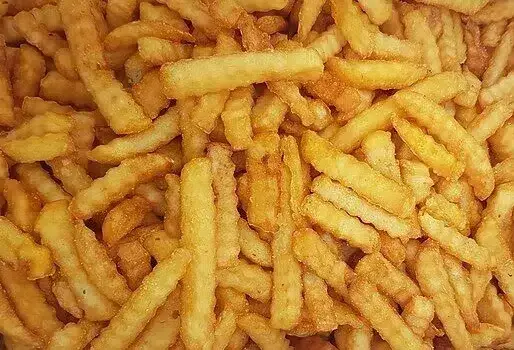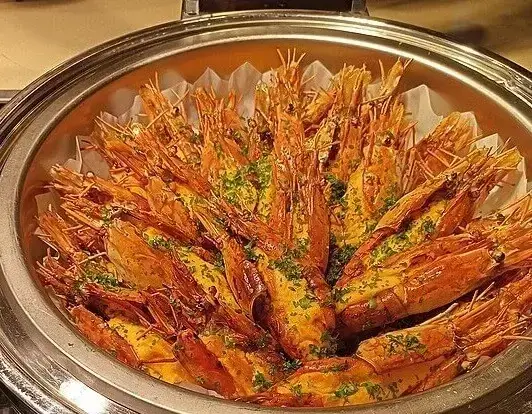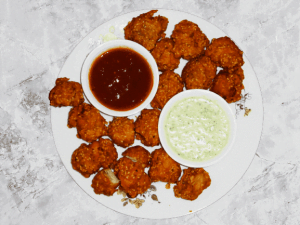Address
Mirpur, Dhaka - 1216
Email
info@zakariazone.com
Savoring the Past with A Delicious Exploration of French Cuisine's History
French cuisine has a long and varied history. It has significantly influenced how the modern culinary world is organized. High-quality ingredients, exacting preparation methods, and the art of presentation are celebrated hallmarks of French cuisine.
What does classical French Culinary mean?
The rich tapestry of cultural influences, geographical diversity, and culinary advances has formed the history of French cuisine over thousands of years. Classical French Culinary refers to the traditional culinary practices and techniques that have been developed and refined in France over centuries. It is characterized by a strong emphasis on high-quality ingredients, precise cooking methods, and rich flavors. Classic French dishes often involve elaborate preparations and presentation, and they often adhere to strict culinary principles and traditions passed down through generations.
French cuisine’s influence can be seen worldwide, and many renowned chefs and restaurants around the globe incorporate French cooking techniques and dishes into their menus.
Why is French cuisine so famous?
French cuisine is known over the world for its high quality, rich flavors, careful techniques, and cultural influence. It is formed by a lengthy history of culinary traditions, talented chefs, and an emphasis on using high-quality, fresh ingredients. Cooking in France has been elevated to an art form, with renowned dishes such as coq au vin, escargot, and crème brûlée. The emphasis on regional delicacies, wine pairing, and a strong culinary legacy have all contributed to French cuisine’s enduring popularity.
Who is known as the father of modern French cuisine?
Auguste Escoffier is widely referred to as the “Father of Modern French Cuisine.” He was a well-known French chef and gourmet writer who lived from 1846 to 1935. Escoffier is regarded as one of the most influential figures in the culinary world, having played a fundamental influence in creating and modernizing French cuisine.
Auguste Escoffier revolutionized restaurant food preparation and service by adopting new techniques and more efficiently arranging kitchen operations. He is well-known for his precise approach to cooking and concentration on using fresh, high-quality products. Escoffier also invented the brigade system, a hierarchical organization in the kitchen that allocated distinct jobs and responsibilities to different chefs, which is still commonly employed in professional kitchens today.
The History of French Cuisine
The history of French Cuisine explaining bellow and Here’s an overview of its evolution over the centuries:
- Ancient Gastronomy (3000 BC – 1st Century AD): It is possible to trace the origins of French cuisine to the Gallo-Roman era. The production of grapes and wheat are just two of the agricultural and culinary traditions that the ancient Gauls and Romans brought to the area.
- Roman Influence (1st Century AD – 5th Century AD):
The Roman invasion of Gaul in the first century AD brought with it a new gastronomic tradition. The usage of olive oil, wine-making techniques, and numerous spices were introduced by Roman influences, considerably improving the local cuisine. With the development of trade channels, French cuisine welcomed unusual ingredients from faraway regions, resulting in a mix of flavors that distinguished it from its European contemporaries. - Middle Ages (6th Century – 14th Century): French cuisine began to take shape as a distinct gastronomic identity during the Middle Ages. Gastronomy was primarily supported by the nobles and clergy, which resulted in the production of intricate and refined cuisine. Spices from the East, such as cinnamon and saffron, became more popular.
- Renaissance (15th Century – 17th Century): During the Renaissance period, Italian cooking techniques and flavors had an impact on French cuisine. In the 16th century, Catherine de Medici’s marriage to King Henry II of France introduced Italian chefs to the French court, introducing new ingredients and preparation methods.
- The Grand Cuisine of Louis XIV (17th and 18th Centuries): The reign of Louis XIV cemented French culinary prowess even more. During this time, professional cooking guilds were formed, and famous textbooks, such as François Pierre de La Varenne’s “Le Cuisinier François,” were published, codifying French culinary methods.
- The Revolution and the Rise of Modern French Cuisine (19th Century): The emergence of French haute cuisine defined the nineteenth century. Auguste Escoffier, a renowned chef and culinary pioneer, had an important role throughout this period. He refined and organized the French kitchen brigade system and created the notion of “brigade de cuisine,” in which each member had distinct functions and responsibilities.
- Belle Époque: The late nineteenth and early twentieth centuries, known as the Belle Époque, saw French food grow even more sophisticated and opulent. Maxim’s and Le Moulin Rouge in Paris achieved international acclaim for their opulent menus and dining experiences.
- Post-World War II: After World War II, French cuisine underwent a rebirth and continued to have an international effect. In the 1960s, the term “nouvelle cuisine” was coined to promote lighter, more creative presentations and a concentration on fresh, local products.
- Modern Era: In recent years, French cuisine has expanded to accommodate a broader spectrum of influences, including international and regional cuisines. French chefs have continued to innovate while being respectful of culinary heritage. It’s all about the history of French cuisine.
The history of French cuisine is a rich tapestry that spans centuries, molded by influences from diverse locations and cultures. From the opulent dinners of royalty to the advent of culinary skills during the Renaissance, French cuisine has evolved into a recognized and celebrated gastronomic legacy cherished worldwide.
What is special about French Food?
- Fresh Ingredients: Fresh, seasonal, and high-quality ingredients, often purchased from local markets, are highly valued in French cookery.
- Technique Mastery: French chefs are famous for their proper training and mastery of various cooking techniques, including sautéing, braising, roasting, and baking.
- Sauces: Béchamel, Hollandaise, Velouté, and other rich and savory sauces, such as Béchamel, Hollandaise, and other reductions, are famed in French cuisine for adding depth and complexity to dishes.
- Bread and Pastries: Bread is an important component of French culture, with baguettes being a favorite. French pastries such as croissants, macarons, and éclairs are extremely well-known over the world.
- Cheese: France has a wide range of cheeses, from mild to pungent, and each region has its own specialties.
- Regional Diversity: The culinary identity of France is profoundly founded in its varied regions, each with its own set of ingredients and traditional cuisines.
- Haute Cuisine: France is recognized for its haute cuisine, which consists of sophisticated and refined dishes that are frequently offered in elite restaurants.
- Culinary Culture: In France, meals are viewed as a social event, with a focus on taking time to appreciate food and people.
French culinary techniques and recipes have tremendously affected foreign cuisine, resulting in the global rise of French-inspired meals.
What are the 5 mother sauces in French culinary?
In French cuisine, the five mother sauces, as classified by chef Auguste Escoffier, serve as the foundation for many other sauces. These are referred to as “grandes sauces” or “sauces mères.” They serve as the foundation for a wide range of derived sauces. The five mother sauces are as follows:
- Béchamel: A white sauce consisting of roux (flour and butter) and milk that is frequently used as a base for creamy foods and sauces. Béchamel sauce is a popular base for a variety of meals, including lasagna, macaroni and cheese, gratins, and creamy soups.
- Velouté: A white sauce created from a roux and a light stock (fish, poultry, or veal) that serves as a base for numerous creamy sauces. Velouté sauce is commonly used in a number of dishes, most notably in French cuisine. It is often used in meals such as soups, stews, and casseroles as a base for various creamy sauces.
- Espagnole: A rich brown sauce created from a brown roux, tomatoes, and brown stock that is used in stews and braises. Espagnole sauce is a thick, brown sauce that is mostly used in French cuisine. It is often used to accompany foods such as roasted meats, poultry, and game.
- Tomato Sauce (Sauce Tomat): A traditional red sauce produced from tomatoes that is frequently seasoned with herbs and used in pasta dishes and other Mediterranean meals. Sauce Tomat, or Tomato Sauce, is a popular base or condiment for foods such as pasta, pizza, meatballs, stews, and soups.
- Hollandaise sauce: A rich and creamy sauce created from egg yolks, butter, and lemon juice that is frequently served with eggs Benedict and other foods. Hollandaise sauce is a popular topping or condiment for a variety of foods, including Eggs Benedict, Asparagus, Fish and seafood, Vegetables like broccoli or Brussels sprouts Grilled meats such as steak or chicken.
Since 3000 BC, the history of French cuisine and gastronomy has been a fascinating story of progress, inventiveness, and passion. French cuisine’s path has been a celebration of the art of cooking, from its humble beginnings as a prehistoric nourishment to becoming a symbol of culinary perfection, and it continues to inspire and thrill food fans throughout the world. Its legacy goes on, blending the story of France’s cultural identity with the country’s long-standing love affair with food.
*Disclaimer: The photos displayed on this site’s pages are sourced from Wikimedia Commons, a platform that allows users to upload and share images. While efforts have been made to ensure the accuracy and appropriate usage of these photos, we cannot guarantee their authenticity or endorse any claims made by the original contributors.










